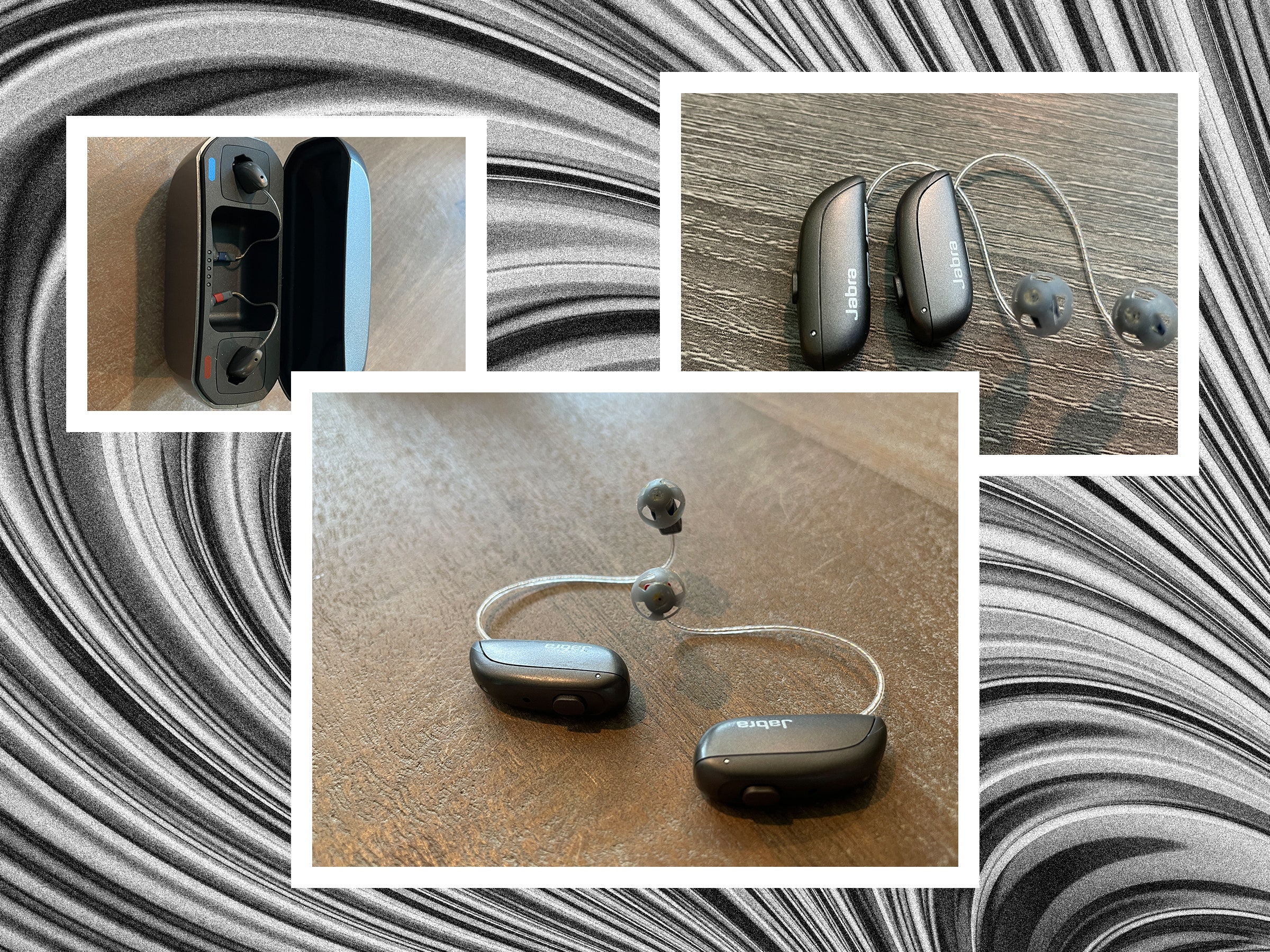Anyone who says you shouldn’t mess with a good thing is wrong—that's old and busted thinking. That kind of talk is a recipe for complacency, particularly in the hearing aid world, where things can and should always get better.
The Jabra Enhance Select 300 has been my top pick for a behind-the-ear hearing aid since I tested it, and I’ve yet to encounter a competitor that could match its performance. It’s up to Jabra then to attempt to beat its own high mark with the Enhance Select 300’s successor: the Jabra Enhance Select 500.
Minor Changes
When looking at the Jabra 300 and 500 side by side, you can be forgiven if you can’t quite see the difference between the two. They look and feel nearly identical, with a familiar behind-the-ear (BTE) design and a thin wire that loops around the top of the ear, connecting to a small receiver that nestles in the ear canal. But the 500 is ever so slightly smaller. Jabra says they are 15 percent smaller than the 300, but I’m not sure how that’s being measured. (By volume? Surface area?)
A single Jabra 300 weighs 2.64 grams on my scientific scale, while the 500 weighs 2.56 grams. That’s a difference of just 3 percent. It’s not nothing … but it also is kind of nothing. Close your eyes and you can’t tell which is which when holding them in your hand. Heck, open your eyes and you’ll still have trouble. Jabra also notes that the center of gravity of the 500 is lower than the 300, enabling a stable fit. Sounds good, but again, I found this impossible to detect without mechanical assistance.
Technologically, the 500 has at least one change, moving from a standard Bluetooth protocol on the 300 to Bluetooth LE on the new model. Bluetooth LE includes the Auracast broadcast audio standard, which allows for a Bluetooth source to stream to unlimited receivers simultaneously. That could theoretically be of use if you want to, say, stream TV audio not just to ambient speakers but to your hearing aids as well, but that’s probably a potential future use case more than anything. I’ve yet to see Auracast in use in the wild.
Bluetooth LE also improves energy efficiency and stability when connected to streaming sources. This is an incremental improvement over older Bluetooth technology and it’s not entirely new, but it wasn’t supported on the Jabra Enhance Select 300. Again, that sounds promising, but Jabra hasn’t changed its battery life specifications: A full charge will still give the Select 500 about 24 hours of running time—which is already an exceptional level. The sizable case (nearly identical) holds three extra charges for 72 extra hours of juice. The only hiccup? I inexplicably experienced trouble getting the case to charge with a third-party USB-C cable instead of Jabra’s included one.

